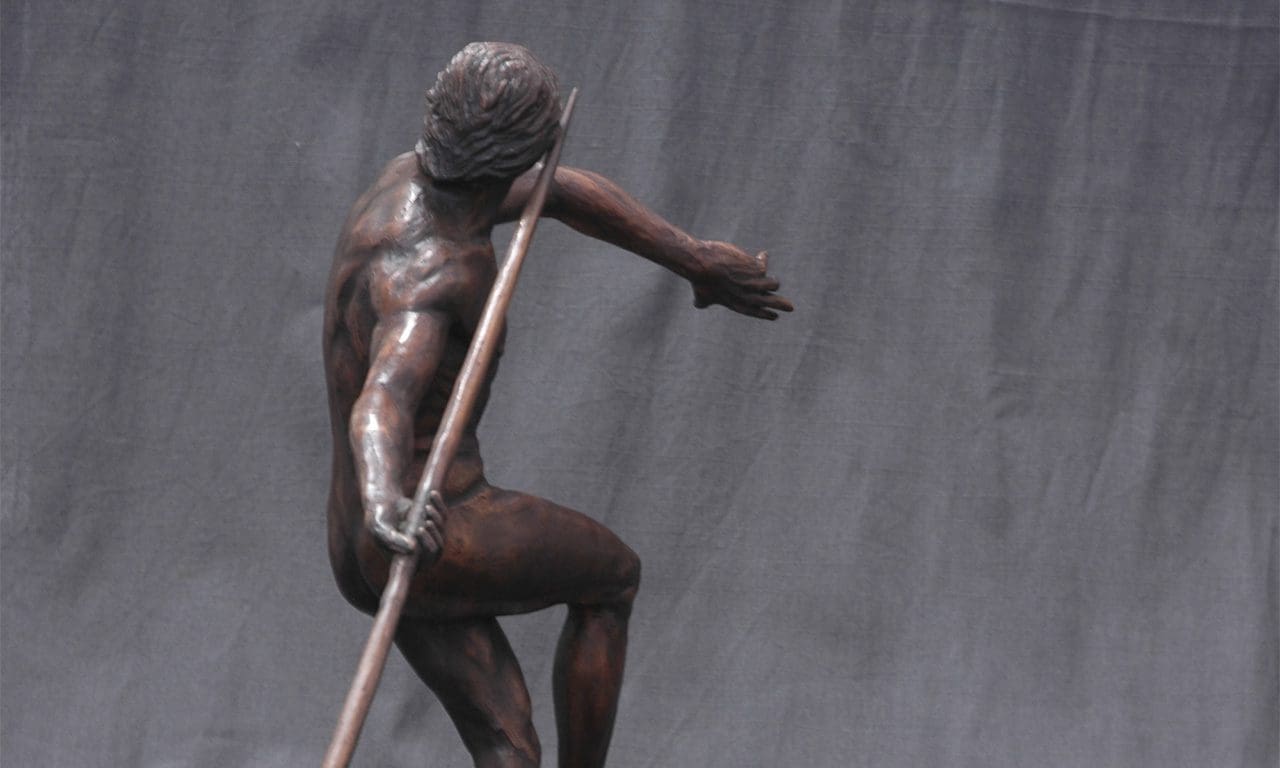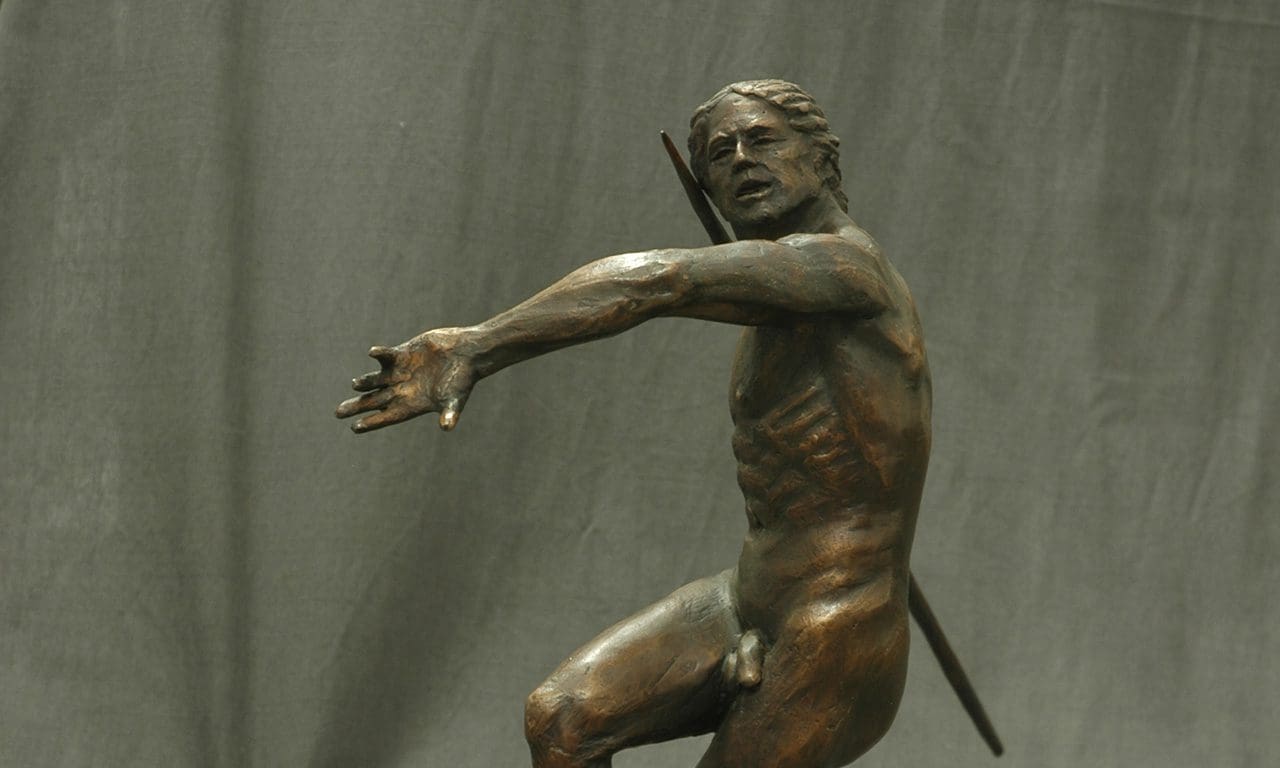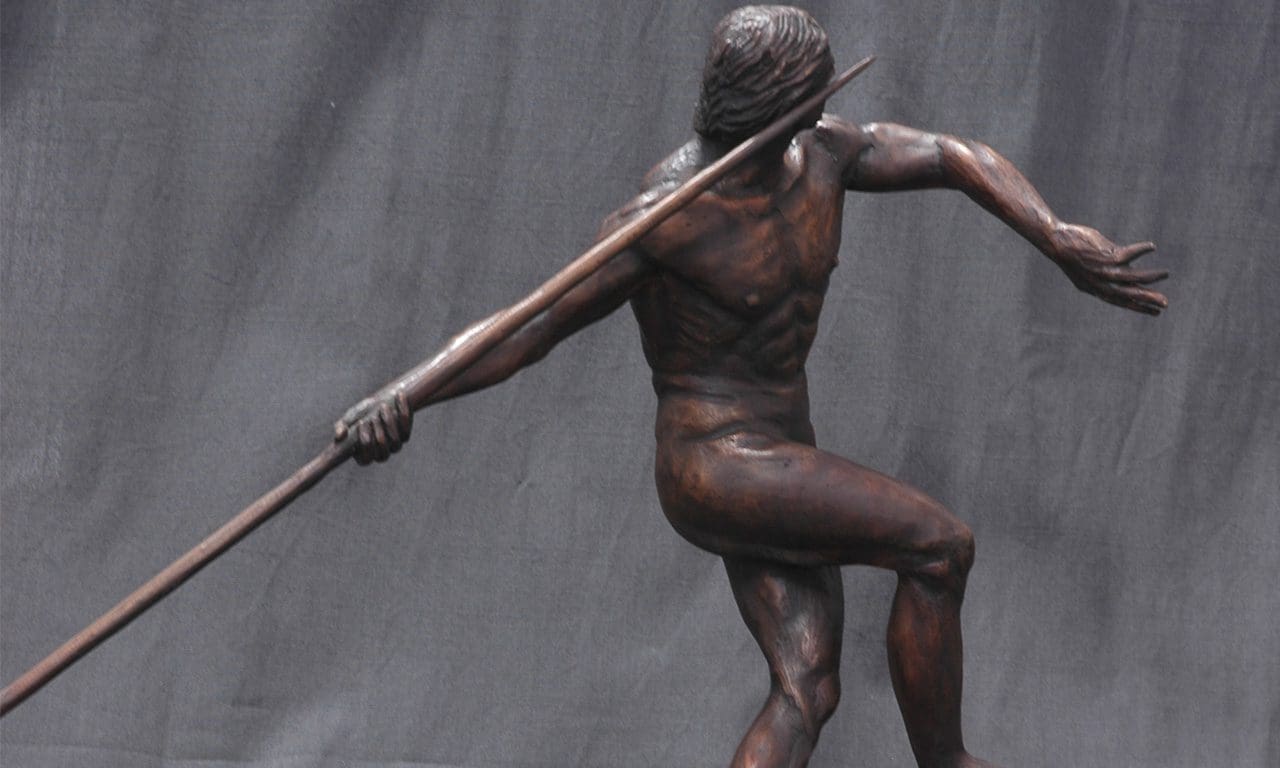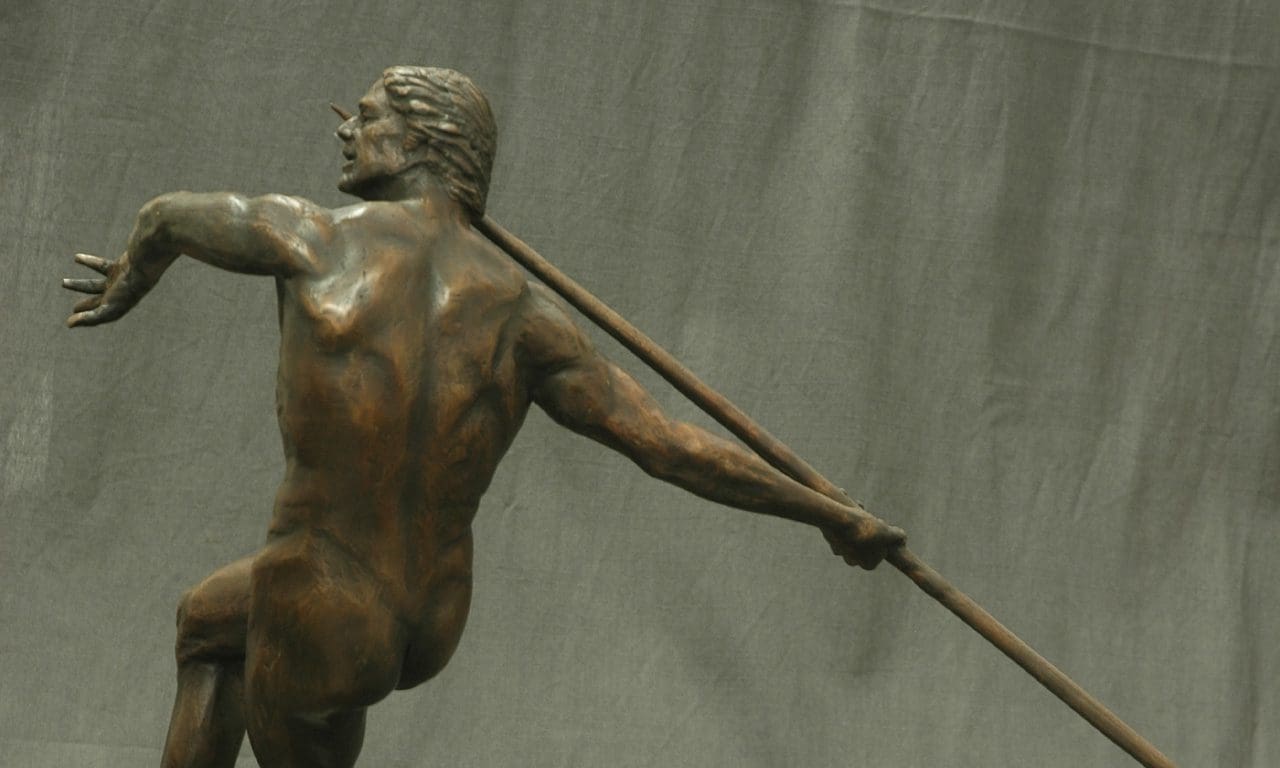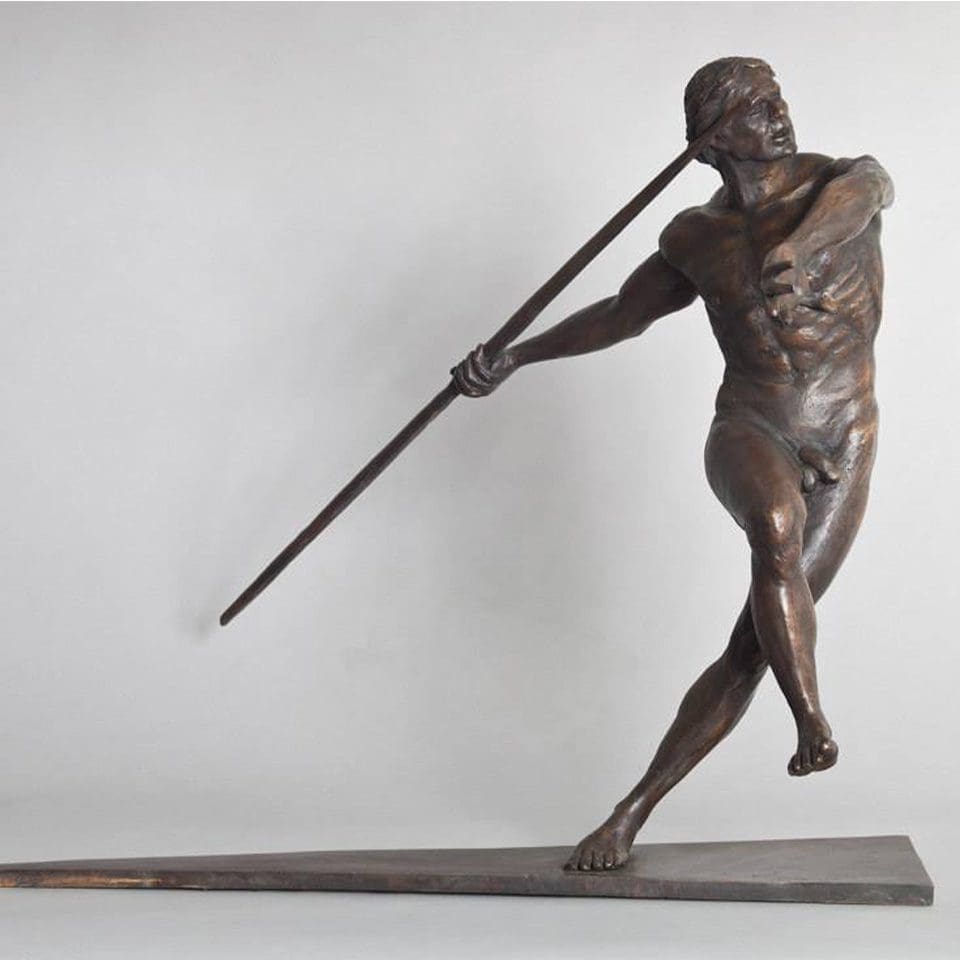Javelin Sculpture
This is a bronze figurative piece. It illustrates balance and movement. It depicts the athlete mid-throw of a javelin. It was sold in the Ib Jorgenson gallery. It is 1:6 life size. This was a one off piece reminiscent of ancient Greek athletes competing in the games.
Javelin: A short description
Javelin throw, athletics (track-and-field) sport of throwing a spear for distance, included in the ancient Greek Olympic Games as one of five events of the pentathlon competition.
The javelin that is used in modern international men’s competition is a spear of wood or metal. It is constructed in accordance with a detailed set of specifications published by the International Association of Athletics Federations (IAAF). Its overall length must be at least 260 cm (102.4 inches) and its weight at least 800 grams (1.8 pounds). The women’s javelin is somewhat shorter and lighter—a minimum 220 cm (86.6 inches) long and 600 grams (1.3 pounds) in weight.
After a short run, the javelin is thrown directly forward with an over-the-shoulder motion. It must land point first. The thrower’s body may not rotate a full turn before the javelin is released. They may not step on or beyond a line at the end of the runway.
Scandinavian athletes dominated the first 50 years of men’s javelin competition. Sweden conducted the first national championship in the event in 1896. Swedish and Finnish athletes held most world records until 1953. The javelin throw has been an Olympic event since 1908. A women’s javelin event was added to the Olympic program in 1932.
It is a direct descendant of spear-throwing contests, introduced in the Olympics of 708 BC. The men’s javelin weighs about 800 grams (1.8 pounds) and must be at least 260 cm (8.5 feet) long. The women throw a javelin that must weigh at least 600 grams (1.3 pounds) and be at least 220 cm (7.2 feet) long. It is the only throwing event not using a circle. The javelin is not required to stick but must land point-first for a valid throw.
Courtesy of: Britannia

